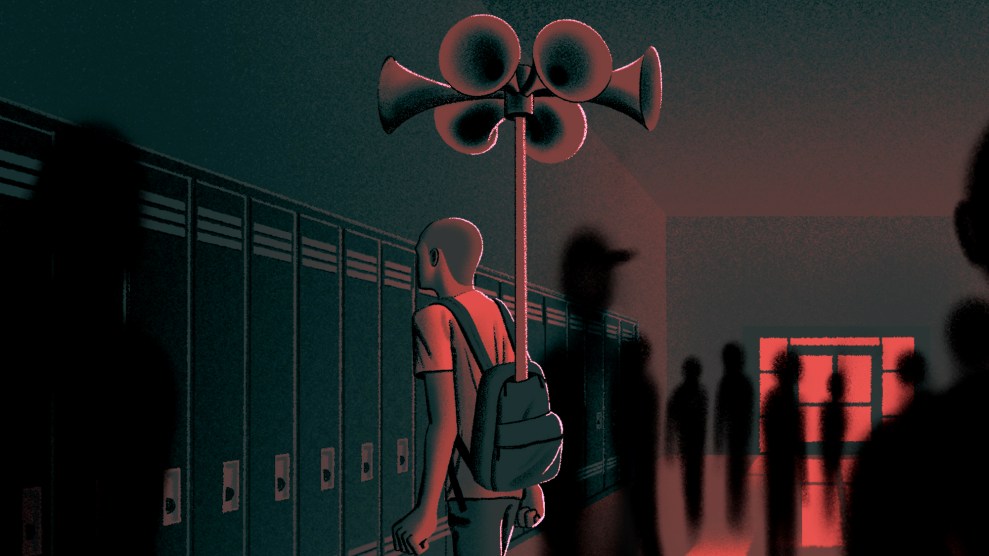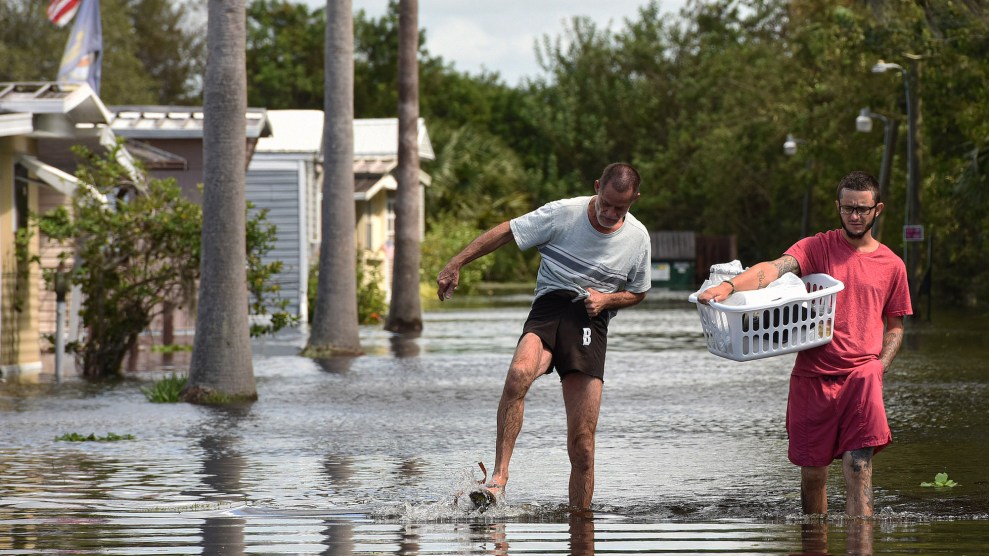
Jose Cardoso, 50, grieves at a makeshift memorial in front of the I.V. Deli Mart, in Isla Vista, California, in 2014.Robyn Beck/AFP/Getty
Ten years ago, a 22-year-old murdered six college students in a suicidal rampage near Santa Barbara, California. Those students were Weihan Wang, Cheng Hong, George Chen, Katherine Cooper, Veronika Weiss, and Christopher Martinez. Many others were injured and traumatized in the attack.
It was a horrific event that has, in some ways, been poorly understood by the public ever since.
Friends sometimes ask me how I could spend so much time researching and reporting on mass shootings, as I’ve done for more than a decade. The answer is simple: I want to know more about how these tragedies can be prevented.
For me, this work started in 2012 with assembling a public database of mass shootings, the first of its kind. Then I began hearing about an obscure approach to violence prevention called behavioral threat assessment. America’s debate over gun policies has long been frustratingly mired in partisan politics, and as I looked into threat assessment, I saw an additional solution, one compelling enough to write a book about. I gained access to leaders in this field and began learning of successful interventions—eye-opening cases of near-attacks unknown to the public because disasters had been averted. Threat assessment teams had stepped in with troubled adults and kids and had gotten them potentially life-saving help. The cases contained vivid evidence of people who were desperate, angry, and often suicidal—and in various stages of planning extreme acts of violence.
As in most places in America back in May 2014, the threat assessment approach did not exist in the college town of Isla Vista adjacent to UC Santa Barbara, where perpetrator Elliot Rodger caused devastation. The attack provoked a media frenzy. That helped give rise to “incel” copycat shooters, an ongoing trend fueled by sensationalized and superficial news coverage. The case also prompted the creation of California’s red flag law, a policy for temporarily removing guns from troubled people that would soon spread to nearly half of all states.
I long knew from my research that Elliot Rodger’s attack had been distorted in the media and online, where commentators and YouTubers focused on the vile misogyny of his final video and his book-length, rage-filled “manifesto.” The more complicated realities of his path to catastrophic violence came even more fully into view after a source told me three years ago about a unique development: Elliot’s mother, Chin Rodger, was privately starting to share her experience with threat assessment experts, wanting to help their mission.
“I hope my hindsight will be others’ foresight,” Chin told me, after we began talking in late 2021. She said that she had stayed silent for years because she feared that telling her story would only harm the victims’ families more. But after she learned about threat assessment, she came to believe that this approach could save lives.
I spent a significant part of the next two years investigating the Isla Vista tragedy and figuring out the right way to tell this story. New details about Elliot’s life from Chin and others, and a trove of previously unreported case evidence that I obtained, reveal important lessons. This is knowledge that can help prevent other attacks—but much of it had been buried by the mythologizing about Elliot as the iconic leader of a violent incel “revolution,” and by other unhelpful themes about America’s epidemic of mass shootings.
These new insights and evidence are featured in my Mother Jones cover story, which we’re publishing online today. An accompanying Reveal audio investigation will allow the public to hear from the mass shooter’s mother for the first time. My new reporting includes:
- Chin Rodger’s extensive account of what she did and didn’t notice, or misunderstood, about her troubled son’s behaviors—warning signs that she had no way of knowing about back then, but that can potentially help experts, and the public, prevent future mass shootings
- Previously unreported case evidence from the perpetrator’s cellphone videos, secret diaries, and private email communications
- Interviews with top threat assessment experts at the FBI’s Behavioral Analysis Unit and elsewhere that cast new light on this pivotal case
- Evidence that calls into question the narrative of Elliot Rodger as an incel ringleader—a narrative that has motivated a decade’s worth of copycat attackers, including at least one mass murderer who in reality had little connection to the so-called incel movement
- Perspective from prevention experts on how red flag laws and threat assessment programs can be key tools for stopping attacks
Digging deep into the story of a mass shooter is delicate and fraught, foremost in terms of how it might affect the victims and their families. There is also the risk of feeding the kind of notoriety that many perpetrators seek. I’ve long reported and warned about these media pitfalls myself.
But as I wrote at the outset of my book, Trigger Points, focusing to varying degrees on mass shooters is integral to understanding the problem, and it reflects how the field of behavioral threat assessment operates and develops research. Reporting in the public interest requires a careful balancing act in this terrain. My purpose is to examine Elliot Rodger’s case in a way that illuminates the potential for thwarting future tragedies. That is possible to an even greater extent because of Chin’s willingness to share her account.
This month marks 10 years since the carnage perpetrated by her son. Ultimately, my hope is that this deeper investigation of the tragedy will serve to improve public understanding of mass shootings—and raise awareness of what we all can do to help prevent the next one.













